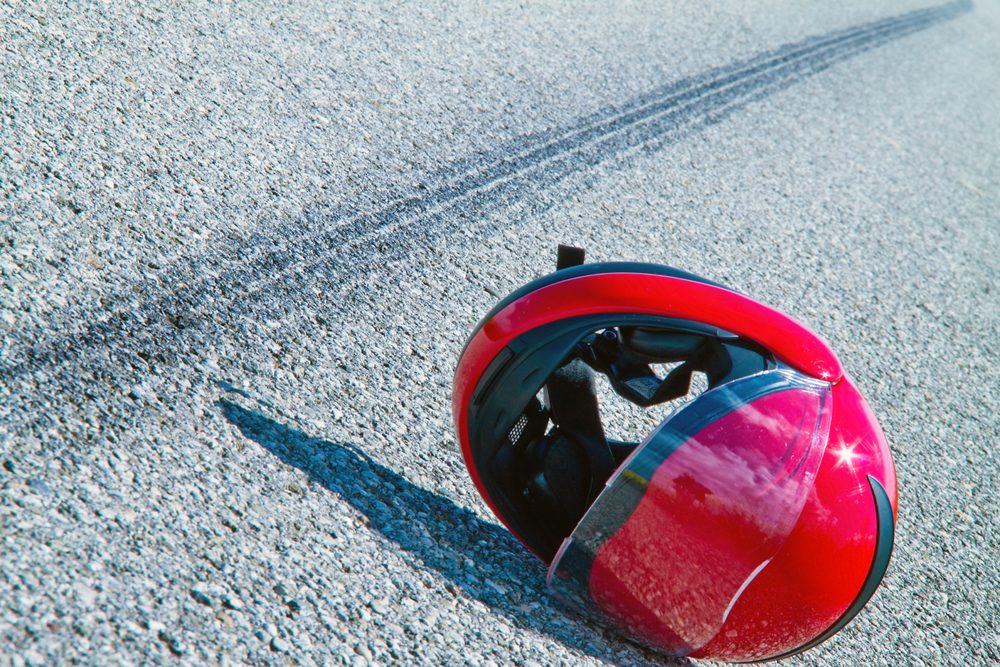Evaluating Motorcycle Skid Marks

,
Robert T. Lynch, PE, Senior Collision Reconstruction Engineer ::::
When a motorcycle leaves a skid mark leading up to a collision, it is indicative of hard braking applied by the rider prior to impact. The skid mark can be from either a locked front or rear tire, or both, as the rear tire follows the same path as the front, laying one skid mark on top of the other. It is not always obvious from the skid mark deposited on the roadway whether both wheels are locked or only one wheel was locked to create the skid mark. An evaluation of the motorcycle tires could potentially determine if both or only one tire was locked. For instances, where there is evidence of only the rear wheel being locked to create the skid mark, one must not assume that only the rear brake was applied. This assumption leads to a reduced roadway friction coefficient, and subsequently, an artificially low speed of the motorcycle.
Even though the evidence may only indicate that the rear wheel was locked during the pre-impact phase of the collision, the absence of a front tire skid mark does not preclude the possibility that the front wheel was also braked, just not enough to lock the wheel to leave a skid mark. As a rider myself, I know that a locked front wheel is something to avoid, but a locked rear wheel is okay as long as the motorcycle is upright, and traveling along a straight path. The Pennsylvania Motorcycle Operator’s Manual states, “If the front wheel locks, release the front brake immediately then reapply it firmly.” The front brake lever should be squeezed firmly and progressively as the front brake can provide 70% or more of the potential stopping power.
So, while the physical evidence may only indicate a locked rear wheel, any analysis of the speed of the motorcycle at the start of the tire mark must consider full brake application (both front and rear) by the rider.
To illustrate this point, I conducted brake testing on my 1997 Harley-Davidson Sportster. I applied both the front and rear brakes firmly and progressively to the point where I was still in control of my motorcycle. The testing indicated I that was able to decelerate at a rate of 0.6g, where 1.0g is the acceleration due to gravity, without locking my wheels or leaving skid marks. A typical coefficient of friction for a vehicle braking on a dry roadway is 0.7g. I’m sure I could have stopped at a slightly higher deceleration rate; however, I wasn’t going to risk dropping my motorcycle, or injury to myself, for the sake of science (well, really just for sake of my own curiosity).
In summary, whenever a motorcycle generates a pre-impact skid mark, an analysis of the motorcycle’s speed must consider full braking by both the front and rear wheels and not just a single wheel brake application.
Robert T. Lynch, PE is a Senior Collision Reconstruction Engineer with DJS Associates and can be reached via email at experts@forensicDJS.com or via phone at 215-659-2010.
Tags: Motorcycle Accident Reconstruction | Robert T. Lynch


